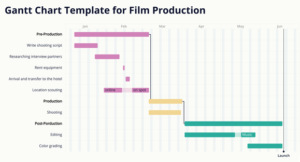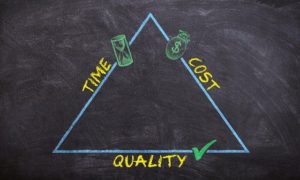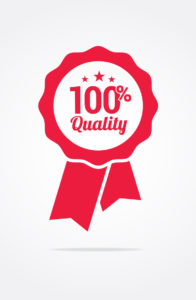About this Project Management course

This is a free online project management course encompassing five sections: a general overview, history, and the future of project management followed by the challenges and opportunities and next steps for managers in the field.
Course Navigation:
- What Is Project Management?
- History of Project Management
- Future of Project Management
- Challenges & Opportunities in Project Management
- Next Steps for Project Managers
This free online project management course directs you toward free videos, podcasts, and resources coupled with questions to aid in processing this exciting field. Each section is created to encompass two to three hours of learning material.
Whenever you see this icon, it is time to stop and watch, listen, read, or reflect.
At the end of each section in this course is an opportunity for to invest further. These suggestions offer memberships, trainings, and certifications within a wide range of financial and time investments, to further enrichment in the field of project management.

1│What Is Project Management?
Project management uses skills and tools to guide a project through to the fulfillment of that project’s requirements within its defined resources and scope. A project is a temporary venture to create something with a beginning, middle, and end.

This video gives an overview of what goes into project management. Note the differences between how various types of projects are structured and what causes a project to be successful (or not).
Who Are Project Managers

Project managers help define a project’s goals, who they need on their team to complete each part of the project, and the timeline for said project. Project managers are organized, goal-oriented, and strategic. They also need to be strong leaders, taking on the goals of the projects as their own goals and inspiring the rest of their project teams with a sense of communal purpose. Project managers need to work well under pressure, change, ambiguity, and deadlines. They notice the details and understand the big picture. Good project managers know that one size does not fit all and can adapt their skills, knowledge, and techniques to work within each new project’s context.
Approaches – When to Choose What
There are many different types of approaches when it comes to project management. Some common ones include waterfall, agile, and lean, along with traditional. These are sets of practices and guiding principles that help you navigate through to the completion of a project in the best way possible. But it’s vital to choose the right approach for your particular project, considering your team, the project goals, and your organization. This is why there are so many to choose from; there really isn’t one that works across the board.


This article will guide you through what you’ll need to consider when choosing an approach for your project. We mentioned some factors already, but before you read, take a minute to think of any other factors you might want to consider.

Read through this CIO article that discusses 17 different project management methodologies. After reading, reflect on a project you’ve worked on in the past. What methodology would have been a good fit? How would that have changed the outcome of the project?

It should be noted that these approaches are often called methodologies. Still, many would argue against that term, especially when it comes to something like Agile, which we’ll discuss further later on. But on that note, here’s an excellent guide for beginning project managers to familiarize themselves with that covers methods, methodologies, and frameworks.
Lifecycle
While methodologies vary, every project has a lifecycle with similar stages, regardless of the project—initiation, planning, execution, control/monitoring, closure. What each stage looks like and what happens within are going to vary from project to project. But the basic framework remains consistent.

This article walks through each of the five stages. As you read, take the time to read through the linked articles in each stage to help you to gain a more thorough understanding of what goes into each phase of a project. You might find it instructive to take a project of your own and identify each of the stages you go through this article.
Further Thought

A Professional Development Unity or PDU is needed for project managers to maintain their Project Management Professional (PMP) certification. It’s continuing education for project managers. You can earn PDUs through activities like completing particular courses or attending specific events. With the Project Management Podcast, you can earn 60 PDUs by subscribing and listening to 15 of their episodes (and documenting it in your PDU logfile).
Further Investment

You might consider becoming a member of the Project Management Institute. Membership offers networking opportunities with over 300 chapters around the world. Members can also get a discount on the PMP and other certification exams, as well as access to a variety of free project management tools and templates.

2│History of Project Management
Project management has always been practiced but started to become the profession we know today in the latter half of the 20th century. But let’s jump back a little farther.
Gantt Chart

In the late 1800s, Karol Adamiecki created a new way of showing interdependent processes with a chart. Henry Gantt popularized a similar type of chart in 1910, now known as a Gantt Chart. A Gantt Chart is a bar chart. It shows the schedule of a project alongside the actual progress made on that project. Gantt Charts were used on such large-scale projects as the Hoover Dam and the start of the United States’ interstate highway network.

Here’s a five-minute explanation of a Gantt Chart. Is this something you’ve used in past projects? What do you see as either the benefits or limitations of this type of project management tool?
PERT
PERT, which stands for Program Evaluation & Review Technique, lets you optimize your work breakdown structure. You start with something like a Gantt Chart and then assign estimates on three timelines—optimistic, most likely, and pessimistic. The comparison of these timelines helps optimize project timelines. PERT evolved out of a need for managing large-scale projects like the 1968 Winter Olympics and the Lockheed missile systems.

In this article, you’ll learn more about PERT, some pitfalls, and when you might want to use it.

Codifying the Field
In the 1970s and ’80s, project management software became available to organizations. In addition, as computers became more sophisticated, there was now the technological ability to oversee projects more efficiently. In the 1980s and 1990s, a project management body of knowledge began to take shape. It’s also when project manager became used as a job title, and certifications became available.
Agile
In the early-2000s, a group of software engineers and developers began to wonder, essentially, if they were approaching project management in the best way possible. Some of them came together and asked what it was that they valued when it came to managing projects. Out of this conversation, the Manifesto for Agile Software Development was born.

The manifest has four core values and 12 principles. Read what those are and consider how they align with your own values and principles when it comes to project management. What do you notice about how Agile deviates from how project management had been viewed previously?

Because Agile approaches project management so differently than its predecessors, it needed to prove itself to be a better way of doing things. And in the mid-2000s, it had that opportunity. Watch this video that goes into the beginnings of Agile, which we just discussed, and into its early years. You can certainly watch the whole video if you’d like, but to start at the section on Agile we’re talking about right now, skip ahead to minute 8:37.
Further Thought

It can be instructive to understand the context for the birth of something that we take for granted today. The Gantt Chart has held up as the archetype of project management for decades. And while it doesn’t change how a project manager might use it, it can be interesting to see the world it arose from. Henry Gantt’s book, Organizing for Work, is an interesting window into the parallels between project management in the early 20th century and today.
Further Investment

The Project Management Body of Knowledge was first released in the mid-1980s and is what a Project Management Professional (PMP) certification is based on. It is the rulebook for best practices and standards in the project management profession. You can gain access by joining PMI as a member, or you can purchase a copy of the most recent edition.

3│Future of Project Management
Remote Work Will Continue

If anything, the COVID-19 pandemic has shown that many roles, include project manager roles, can be done remotely. And the reality is, this may very well become the new norm once the pandemic has passed. And while some research indicates that remote work leads to increased productivity, there are challenges with this arrangement. Collaboration and team building suffer in remote environments, which are two critical factors for project managers. If remote work is truly the future for many project managers, they’ll need to explore new ways to encourage collaboration, communication, and teamwork with their project teams.

Here is a piece on how to improve your team’s remote communication. As you read, note the mindset shifts between remote and in-person work. As a project manager, how can you help lead your team toward these mindset shifts if remote work isn’t gelling? What have you experienced from effective leaders in this area (or ineffective ones)?
Agile Reigns…

Alan Zucker from Project Management Essentials found that over 70 percent of organizations in a survey they did are using Agile at least part-time. It seems clear that for now, at least, Agile has established itself as the top pick for project management. Agile is, well, agile. It makes it easy to adapt to changes and evolutions of your project as things move along.

But there are other significant benefits when it comes to using Agile to keep your project moving along. This article highlights some of the other big ones. What is appealing to you about using Agile as a project manager?
…But There’s Room for a Blended Approach
It’s worth noting that Agile is not the be-all-end-all of project management, and it is essential for project managers to (pun intended) remain agile when it comes to the methodologies with which they approach their projects.

Listen to this podcast episode from LeadingAgile as LeadingAgile Senior Consultant Brandon Dudley shares how he moved his mindset from Waterfall to Agile. As you listen, consider how this shift to Agile wasn’t necessarily at the expense of other ways of thinking. Is it truly necessary to make a clean break from something else into Agile? In your experience, is the approach Dudley takes of value?
Uncertainty Continues


It’s a strange time in many industries. Each year the Project Management Institute releases its project management jobs report for the coming year. With all the turmoil of 2020, 2021 remains murky and uncertain. Some industries are struggling while others are holding steady or even thriving. What are your takeaways from the report?

After you read, spend some time listening to this PMI podcast on jobs outlook for 2021. Did the conversation shed light for you on pockets of opportunity when it comes to project management?
Further Thought

If you’re considering earning an Agile certification, here are seven programs you can look into. You’ll also learn a bit more about how a certificate in Agile might benefit you. If you aren’t ready to invest in an Agile certification yet, you could also take one of these free courses from Udemy. They’re all between 30 minutes and two hours and will help you better understand what Agile is all about.
Further Investment

Particularly if you’re considering the PMI-ACP exam, you could invest in The Agile Prepcast to help you prepare. In addition to video training, you’ll also have access to 480 sample questions from the exam to help give you a realistic idea of what the test is like.

4│Challenges & Opportunities in Project Management
Everything Is Digital
Whether you like it or not, the COVID-19 pandemic has truly shifted everything digital. This wasn’t a surprise. But when something as simple as brainstorming with a team on a whiteboard in a conference room was no longer a viable option, finding a digital space had to work. One is not necessarily better than the other, but a good project manager knows the boundaries of their digital tools and how to make them the most useful for their team.

But with new tools coming out seemingly every day, a good project manager also needs to stay on top of what’s available. It can be appealing to go with a tool that has name-recognition. But it’s essential to consider the specific team that will be using each tool. What happens if the team needs to grow during the project? Or the reverse? Will the tool still work as intended?

There are so many project management tools to choose from. And as a project manager, it’s important to be familiar with what’s out there. Here’s a list of 44 top project management tools. Spend some time reading through them and doing some research on what they provide. Pick a few that seem like they might be particularly beneficial for an organization, team, or project you’re working on, and consider if they offer the functions and the flexibility you need.
The Gig Economy
Even before the pandemic, an increasing number of professionals were freelancing, including project managers. With more people laid off or getting a taste for the freedom that freelancing offers, the gig economy is likely to continue. And this provides some great opportunities but also challenges for project managers. In part, it wouldn’t be surprising to see an increasing number of freelance project managers. Perhaps more pertinent is the impact that freelance team members have on a project. We’ve already discussed the fact that remote work is likely to continue in some fashion. The challenge here is how to build trust with team members and workflows that are effective.

This article goes into some of the ways project managers can navigate freelance teams. How do you feel about leading this type of team? How might you lead a team composed of more freelancers differently?
Flexible Leadership
As a project manager, you are a leader of your project’s team. And good leadership requires flexibility. As things continue to shift in response to the pandemic, new ways of working—like the gig economy—and other natural changes, project managers need to know how to respond in ways that bring out the best in the team for the good of the project.

This podcast episode from PM Point of View looks at what good leadership looks like in a fast-changing world. How would you describe your leadership style? What do you value most as a leader, and how do you model that for your team?
Stay on Budget. Define Scope. Make deadlines.

Sometimes the biggest challenges can be the most basic ones. As a project manager, you are constantly faced with the challenges of keeping your project running on time and on budget. Understanding the scope and goals of each project is part of keeping the project moving forward smoothly.

This article covers nine project management challenges that are sort of run-of-the-mill. As you read, what about the suggestions they have for overcoming them feel useful to you? Are any of these particular ongoing challenges for you, or do you find project challenges vary from project to project?
Further Thought

The Digital Project Manager put together a survey of the challenges that project managers faced in 2020. It covers everything from salary and location to communication and leadership. It’s interesting to note what rose to the top as project managers’ top three challenges.
Further Investment

Earn a certificate in project leadership from the Cornell Certificate Program. If you’re also looking to earn a PMP certification, you can apply 36 hours from this program towards that as well. You also have an option to join a five-week PMP study group.

5│Next Steps for Project Managers
Earning a PMP Certificate


We’ve already talked briefly about them, but many project managers choose to earn a Project Management Professional certificate or PMP. PMP project managers see a significant salary increase at a base level, and there are other benefits to holding a PMP certificate. But there are also costs to the process. This article covers both. As you read, do you find yourself compelled to pursue a PMP certificate or not? How do you feel either decision might help or hinder your career trajectory?

To earn a PMP certificate, you must pass an exam. Like the CPA exam in accounting, it’s a big one and something you’ll want to make sure you dedicate time to study for. There are a zillion types of resources out there to help you prep for the PMP exam. Here’s a list of several resources you might want to look into to begin the process. These are all centered around the PMBOK, which we discussed earlier.

Something significant to consider when going into this (or any) exam is how you think and not just what you know. This podcast episode from PMP Exam Success Secrets with Scott is a helpful guide. As you listen, consider how your typical mindset and approach for studying for big exams like this one.
Keep Up with Your PDUs
To maintain your certification as a Project Management Professional, you need to earn a specific number of Professional Development Units. You can earn PDs in various ways, including completing particular courses, attending events, or even listening to podcasts, as we suggested earlier on in this course. But other, perhaps less obvious ways to earn PDUs are by contributing toward the project management body of knowledge or volunteering your time and project management expertise. You can also earn PDUs by just practicing project management at your job. Part of the reason for the variety is because every project manager has their own interests and skills. Since PDUs are professional development, it’s great to be able to tailor them to fit you and your career.

The Project Management Institute goes more into detail about the various ways you can earn PDUs. What are the most interesting options for you?
Soft Skills

This is not unique to project managers, obviously, but because project managers deal with people and teams, they must have strong interpersonal and communication skills. A good project manager makes their team members feel heard, valued, and trusted. And while some people come to these types of “soft” skills naturally, there is always space to grow and develop them.

Here are six essential skills you’ll want to have as a project manager. Do your feel more comfortable with some over others?

This article is interesting because, as you read it, you’ll notice that what it’s saying makes a great project manager are all tied back to these soft skills. What’s your perspective?
Know Your Tools

New project management tools are rolling out all the time. Some of them you might be very familiar with and use regularly. As we discussed earlier, the tools and approaches you take will likely vary, at least to a degree, from project to project. Here are a few of the best project management tools out there right now. Are you already familiar with some of them? Are there any you might like to learn more about?
Further Thought

Here is a free, 12-hour PMP certification course from Edureka. It goes into all the fundamentals of the certification exam to help you pass.
Further Investment

Something we didn’t even have a chance to talk about in this course is PRINCE2, although it was discussed in some of the linked resources. PRINCE2 is another common type of project management method and certificate program. It is widely recognized worldwide and has its own qualifications and training, like the PMP certificate. You can learn more about PRINCE2 here, including signing up to attend training and earn a certification.

This is the end of our free online Project Management course. We hope it gives you a good background on the topic!